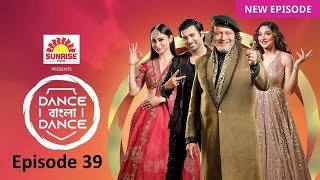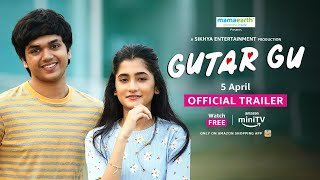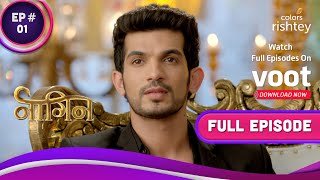Dance Bangla: Rhythm, Dreams & Stellar Moves in Bengal’s Spotlight
Introduction
Dance Bangla redefined reality entertainment in Bengali television by transforming a classic competition into a heart-thumping celebration of cultural pride, familial bonds, and the magic of dance. Far more than flashy performances, it offers a powerful narrative about hope, artistry, and identity, woven around contestants who leap toward their dreams under city lights and familial pressure alike.
The Show’s Canvas
From the moment the opening beats pulse across the screen, Dance Bangla grips its audience. Teams of dancers from across West Bengal—Dhaka, Howrah, Bolpur, Siliguri—compete in elimination rounds filled with solos, duets, and group spectacles. Each week a fresh theme is unveiled: rural love stories, modern hustle, mythic sagas, classical traditions, or social messages. Contestants transform themselves, choreographing not just dance moves but intricate stories of love, conflict, joy, and protest. This blend of emotional storytelling and cultural celebration grants Dance Bangla a soul deeper than mere stagecraft.
Characters at Centerstage
1. The Contestants
These are everyday heroes—schoolteachers, engineers, students, professionals—who carry the weight of village festivals, familial expectations, and timeless curiosity. For many, dance is born of rituals: the child who learned regional folk steps at weddings, the college dropout who practiced Hip Hop routines in secret. Their transformations are emotional journeys: conquering stage fear, reconciling passion with responsibility, and occasionally rediscovering identity through movement.
2. Judges: Authority with Heart
A panel of seasoned dancers and choreographers serve as both critics and mentors. Their role fluctuates between stern coach and compassionate guide—challenging rigorous technique, offering soulful critiques, or advising contestants through anxiety, self-doubt, or creative blocks. What makes them compelling is their authenticity: no platitudes, no favoritism—just honest, caring storytelling that builds hope as much as technique.
3. Hosts: The Emotional Bridge
The hosts anchor Dance Bangla’s humanity. Empathy flows naturally—they hold hands of crying girls awaiting verdicts, celebrate triumphant smiles, tease contestants nervously dancing to practice beats. They hold space for tears, laughter, and victorious spins—and in doing so, they bridge stage spectacle and real lives.
Themes & Emotional Arcs
Pursuit of Dreams
Every step on the stage represents years of practice—often conducted in stolen minutes between schoolwork and family chores. The show chronicles how dance becomes both an escape and a mission. Some contestants vow to support families through prize winnings; others hope to spark social change—say, empowering women on screen through bold, expressive choreography.
Tradition Meets Trend
A signature strength of Dance Bangla is in blending classical and cultural roots—Odissi mudras, Chhau jumps—with street style, Popping-Wave, Bollywood jazz. These mashups honor heritage while pushing boundaries. In doing so, the show becomes a repertory for cultural identity, innovation, and boundary-breaking spirit.
Resilience in Adversity
Several dancers face real-world challenges—financial limitations, lack of formal training, or even judgment. One contestant might borrow a costume from a neighbor, another might rehearse at 3 a.m. to work daytime shifts. Their resilience becomes the heartbeat of each episode, the driving force that inspires viewers to believe in second chances.
Family: Rooted in Hope
Every contestant has a backstory anchored by family—parents coaxing yeses out of skeptical dissent, grandparents teaching folk steps, in-laws storming in with conservative concerns. Unlike many reality shows, Dance Bangla spotlights families as emotional entities, not background figures. When a grandmother shows up backstage, bowing with pride, we feel the cultural upheaval and emotional stakes intimately.
Format & Emotional Momentum
- Auditions: Often raw. Judges see talented dancers performing in humble venues: school halls, temple courtyards, rural fields. The stakes are palpable when life aspirations hinge on a “yes.”
- Themed Rounds: Each week explores a concept—such as “Seasonal Celebrations” during Durga Puja or “Women’s Emancipation”—with choreography, costume, and narrative built around it. Teams craft short stories that resonate emotionally: a mistreated bride liberated, a rural mother rewriting her life in dance.
- Eliminations: The hardest part. The stage becomes a microcosm of loss, growth, and resilience. Even eliminated, the contestants receive mentor tips and emotional closure. Perhaps it’s the heartfelt hug from a judge or the hosts gifting them a final flourish on stage that lingers.
Technical & Creative Craft
Choreography & Staging
Choreographers shape each routine with cinematic grandeur—spotlight arcs, fog effects, and dynamic formations. Whether it’s contemporary solos that mimic water flows or folk sequences that echo village fairs, the visual appeal is stunning.
Costuming & Visual Storytelling
Costumes are narrative tools: glittering lehengas for mythical heroines, denim-ripped jackets for urban protest routines, flowing cottons for spiritual pieces. Texture and color amplify emotion. The background, too, plays a role—big LED screens show rainstorms, cosmic skies, or nostalgic village exteriors.
Sound & Music
Music is integral—composed to evoke nostalgia, adrenaline, communal pride, or cinematic drama. Live vocals accompany some pieces; folk voices whisper in classical-themed routines. The music defines the energy, grounding each performance in emotional and cultural contexts.
Cultural Impact & Legacy
Dance Bangla is more than entertainment; it’s cultural currency. Schools host intercollegiate dance battles. Kolkata’s film studios scout dancers. Shoes are sold out after episodes feature dazzling choreography. And behind each applause is a shift: communities reaffirming pride in their language, caste heritage, or village traditions.
It’s not unusual for alumni to appear at municipal festivals; for local dance teachers to find new students; or for folk-dance families to see their work validated on national TV. The show becomes a modern folk tale—where real people step into characterhood, shift public narratives, and embody regional identity on a national canvas.
The Final Word
Dance Bangla resonates because it offers more than performances—it shows the soul behind the stage. Each pirouette is a step toward healing, self-expression, and courage. Each elimination is not an end, but transformation: a stake in resilience, a rehearsal in hope. It’s a celebration of imperfect bodies, passionate souls, and the timeless desire to be seen, heard, and understood.
If you’d like, I can offer detailed character sketches of the finalists, scene-by-scene breakdowns of emotional routines, or a cultural comparison with other Indian dance shows. Just let me know!







